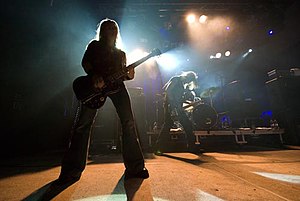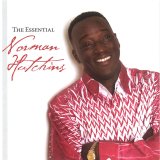Famous lyrics by »
.jpeg/220px-Warhorse_(album).jpeg)
The first evidence of horses in warfare dates from Eurasia between 4000 and 3000 BC. A Sumerian illustration of warfare from 2500 BC depicts some type of equine pulling wagons. By 1600 BC, improved harness and chariot designs made chariot warfare common throughout the Ancient Near East, and the earliest written training manual for war horses was a guide for training chariot horses written about 1350 BC. As formal cavalry tactics replaced the chariot, so did new training methods, and by 360 BC, the Greek cavalry officer Xenophon had written an extensive treatise on horsemanship. The effectiveness of horses in battle was also revolutionized by improvements in technology, such as the invention of the saddle, the stirrup, and the horse collar. Many different types and sizes of horses were used in war, depending on the form of warfare. The type used varied with whether the horse was being ridden or driven, and whether they were being used for reconnaissance, cavalry charges, raiding, communication, or supply. Throughout history, mules and donkeys as well as horses played a crucial role in providing support to armies in the field. Horses were well suited to the warfare tactics of the nomadic cultures from the steppes of Central Asia. Several cultures in East Asia made extensive use of cavalry and chariots. Muslim warriors relied upon light cavalry in their campaigns throughout Northern Africa, Asia, and Europe beginning in the 7th and 8th centuries AD. Europeans used several types of war horses in the Middle Ages, and the best-known heavy cavalry warrior of the period was the armoured knight. With the decline of the knight and rise of gunpowder in warfare, light cavalry again rose to prominence, used in both European warfare and in the conquest of the Americas. Battle cavalry developed to take on a multitude of roles in the late 18th century and early 19th century and was often crucial for victory in the Napoleonic Wars. In the Americas, the use of horses and development of mounted warfare tactics were learned by several tribes of indigenous people and in turn, highly mobile horse regiments were critical in the American Civil War. Horse cavalry began to be phased out after World War I in favour of tank warfare, though a few horse cavalry units were still used into World War II, especially as scouts. By the end of World War II, horses were seldom seen in battle, but were still used extensively for the transport of troops and supplies. Today, formal battle-ready horse cavalry units have almost disappeared, though the United States Army Special Forces used horses in battle during the 2001 invasion of Afghanistan. Horses are still seen in use by organized armed fighters in the Global South. Many nations still maintain small units of mounted riders for patrol and reconnaissance, and military horse units are also used for ceremonial and educational purposes. Horses are also used for historical reenactment of battles, law enforcement, and in equestrian competitions derived from the riding and training skills once used by the military.
0 fans








Share your thoughts on Warhorse with the community:
Report Comment
We're doing our best to make sure our content is useful, accurate and safe.
If by any chance you spot an inappropriate comment while navigating through our website please use this form to let us know, and we'll take care of it shortly.
Attachment
You need to be logged in to favorite.
Log In